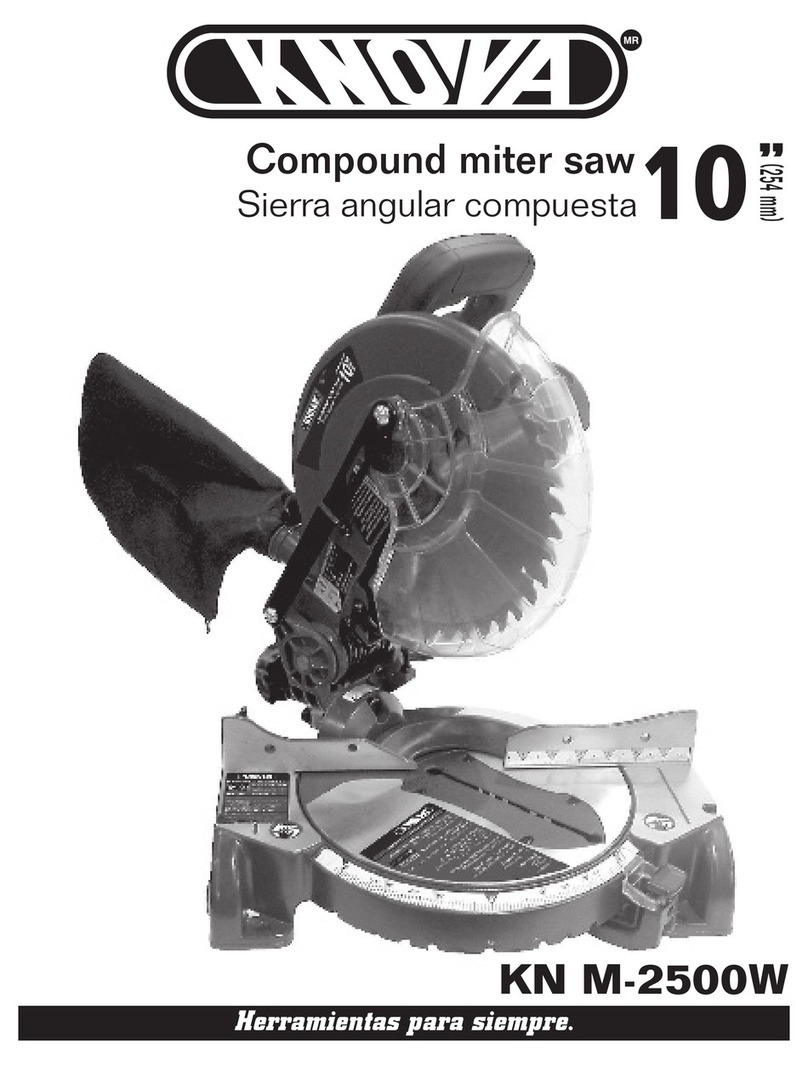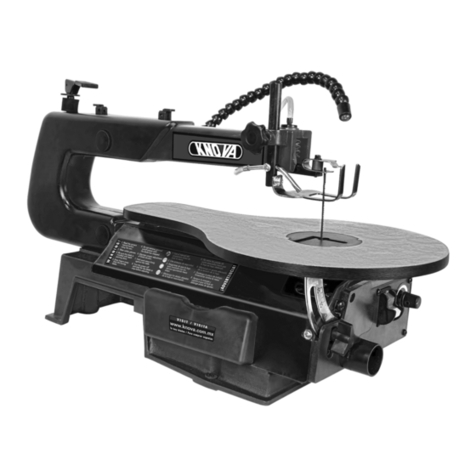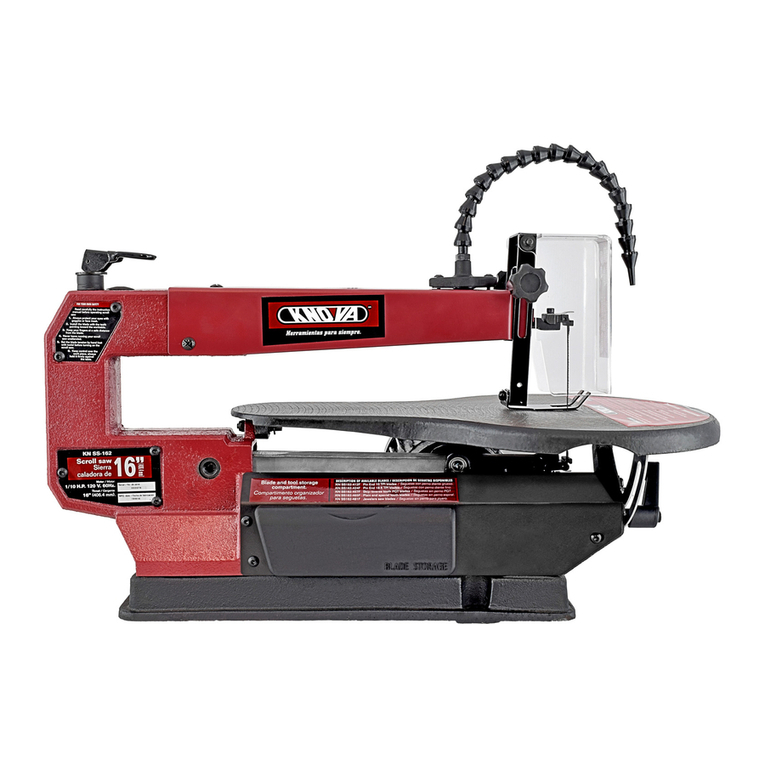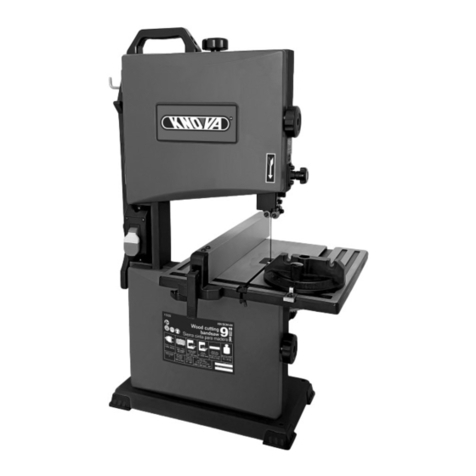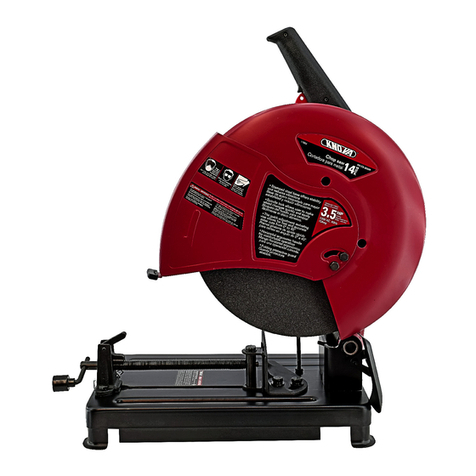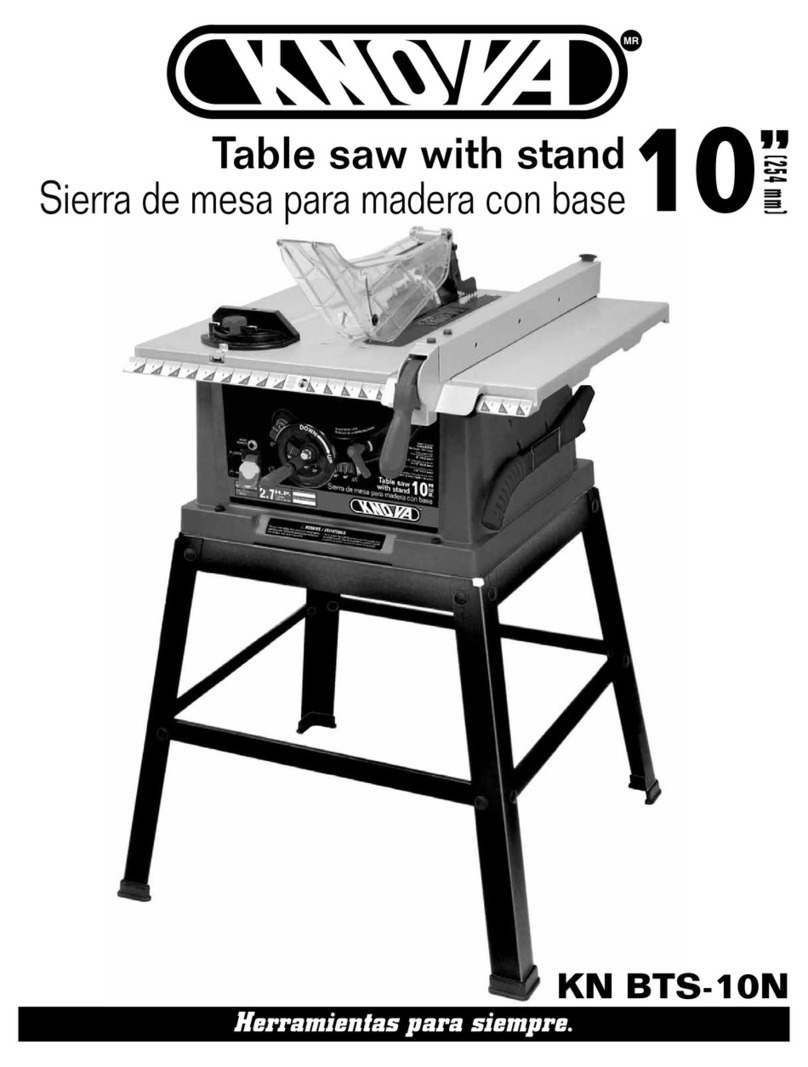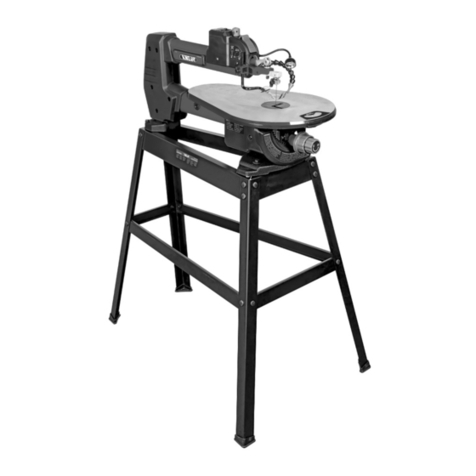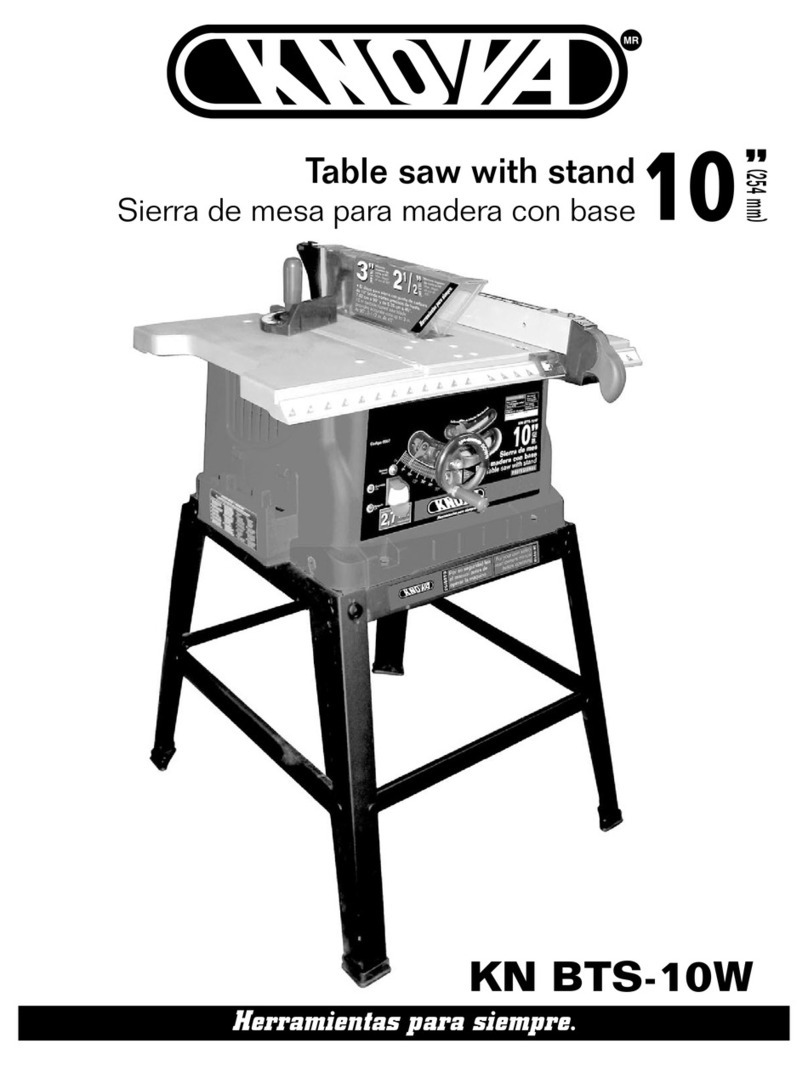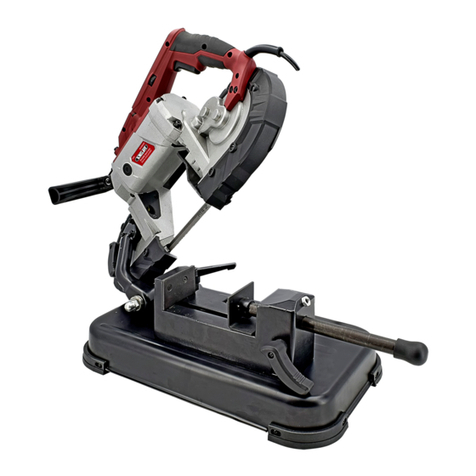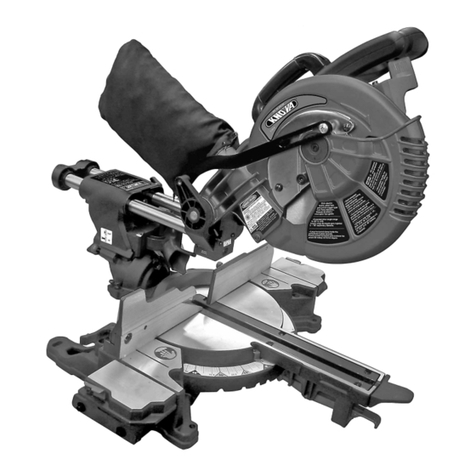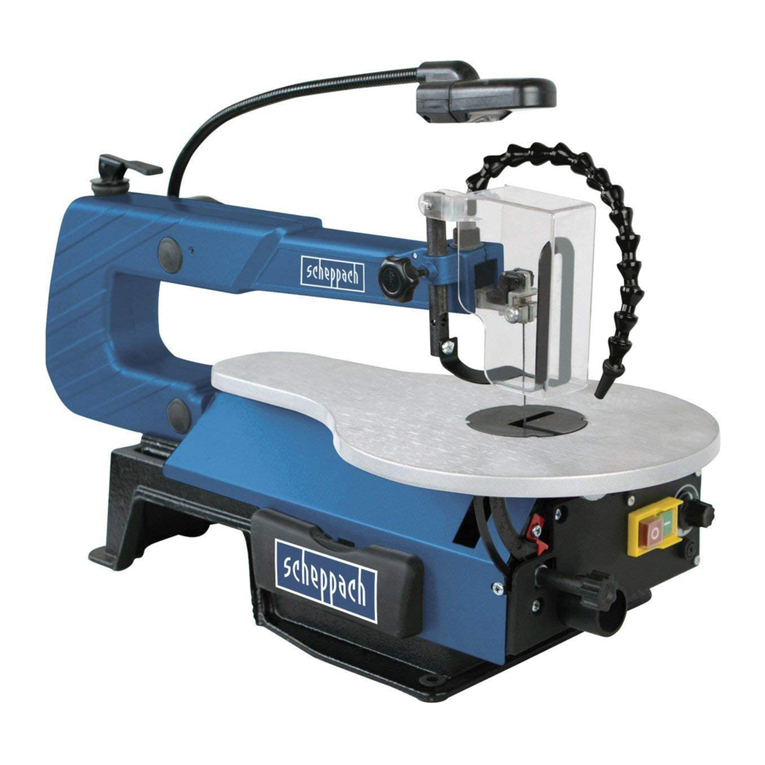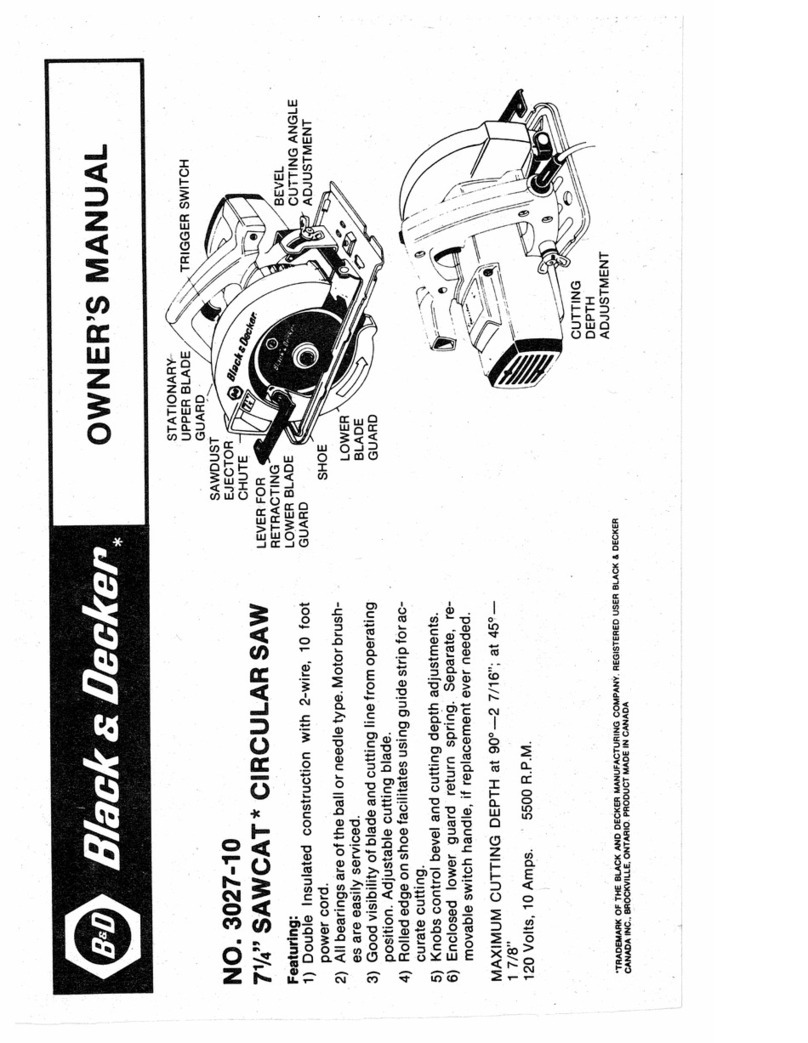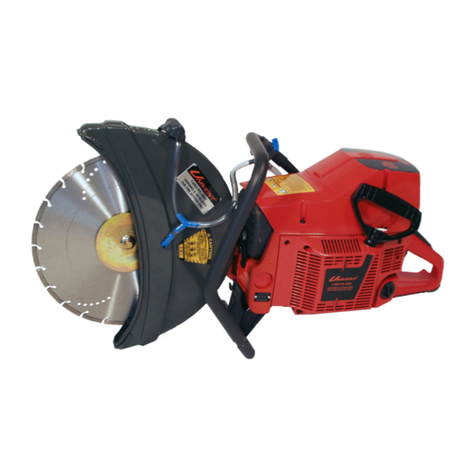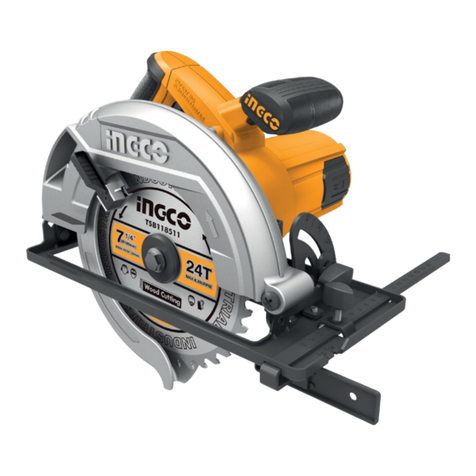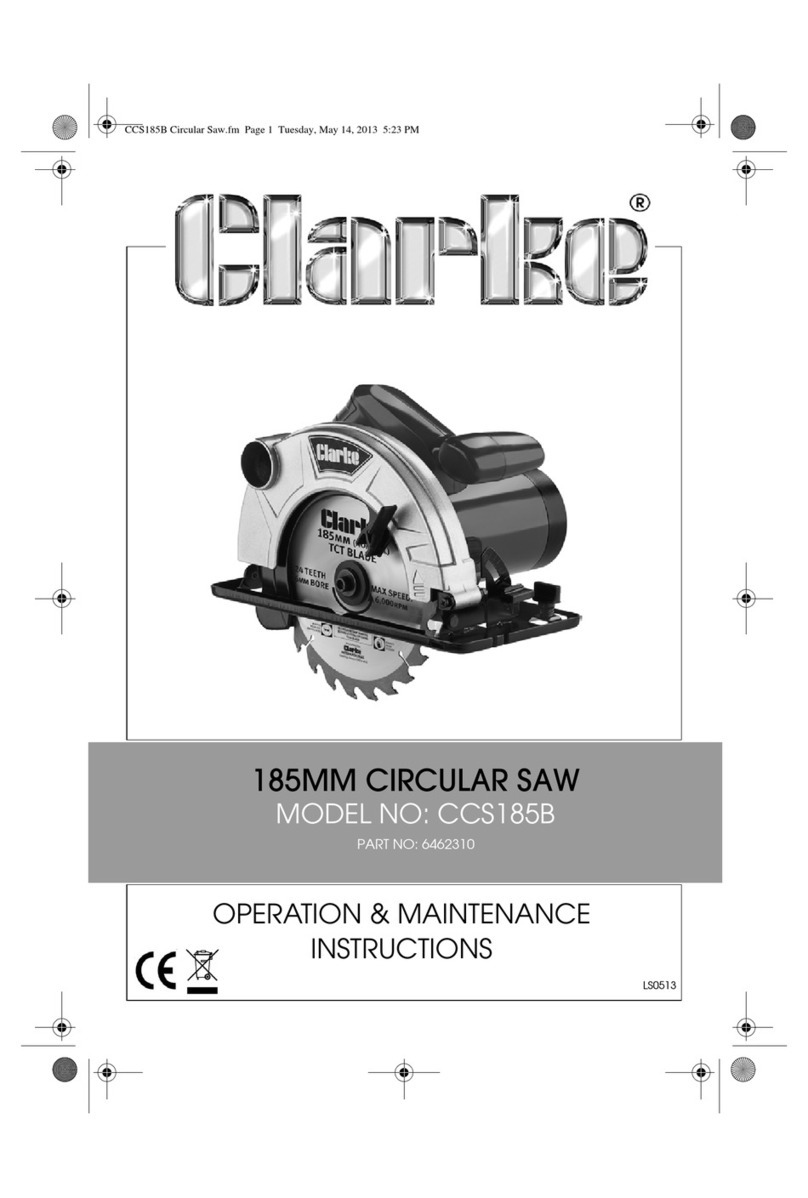
3
TABLE SAW SAFETY
1. ALWAYS USE SAW BLADE GUARD, riving knife and
antikickback pawls assembly for every through–sawing
operation. Through–sawing operations are those in which
the blade cuts completely through the workpiece when
ripping or crosscutting. Always be sure blade guard is
tightened securely.
2. ALWAYS HOLD WORKPIECE FIRMLY against the miter
gauge or rip fence.
3. ALWAYS USE a push stick or push block, especially when
ripping narrow stock. Refer to ripping instructions in this
Operator’s Manual where the push stick is covered in
detail. A pattern for making your own push stick is
included on page 25.
4. NEVER PERFORM ANY OPERATION FREEHAND, which
means can using hands to support the workpiece, but
always use either the fence OR the miter gauge to
position and guide the workpiece.
18. ALWAYS USE IN A WELLVENTILATED AREA. Remove
sawdust frequently. Clean out sawdust from the interior
of the saw to prevent a potential re hazard. Attach a
vacuum to the dust port for additional sawdust removal.
19. NEVER LEAVE THE SAW RUNNING UNATTENDED. Do
not leave the saw until the blade comes to a complete
stop.
20. For proper operation follow the instructions in this
Operator’s Manual entitled ASSEMBLY AND
ADJUSTMENTS (Page 8). Failure to provide sawdust
fall-through and removal hole will allow sawdust to build
up in the motor area resulting in a re hazard and
potential motor damage.
21. USE ONLY saw blades recommended with the warning
that the riving knife shall not be thicker than the width of
the groove cut by the saw blade and not thinner than the
body of the saw blade.
22. USE PUSH-STICK OR PUSH BLOCK to feed the
workpiece past the saw blade. The push-stick or push
block should always be stored with the machine when not
in use.
SAW BLADE GUARD ASSEMBLY, ANTI-KICKBACK
ASSEMBLY AND RIVING KNIFE
Your table saw is equipped with a blade guard assembly,
anti-kickback assembly and riving knife that covers the blade
and reduces the possibility of accidental blade contact. The
riving knife is a at plate that ts into the cut made by the saw
blade and effectively ghts kickback by lessening the tendency
of the blade to bind in the cut. The blade guard assembly and
antikickback assembly can only be used when making through
cuts that sever the wood. When making rabbets and other
cuts that make non through cuts, the blade guard assembly
and antikickback assembly must be removed and riving knife
lowered to the non through cut position marked on the riving
knife. Two anti-kickback pawls are located on the sides of the
riving knife that allow the wood to pass through the blade in
the cutting direction but reduce the possibility of the material
being thrown backwards toward the operator. Use all
components of the guarding system (blade guard assembly,
riving knife and anti-kickback assembly) for every operation
for which they can be used including all through cutting.
If you elect not to use any of these components for a
particular application exercise additional caution regarding
control of the workpiece, the use of push sticks, the position
of your hands relative to the blade, the use of safety glasses,
the means to avoid kickback and all other warnings contained
in this manual and on the saw itself. Replace the guarding
systems as soon as you return to thru-cutting operations.
Keep the guard assembly in working order.
KICKBACKS
KICKBACKS: Kickbacks can cause serious injury. A kickback
occurs when a part of the workpiece binds between the saw
blade and the rip fence, or other xed object, and rises from
the table and is thrown toward the operator. Kickbacks can be
avoided by attention to the following conditions.
How to Avoid Kickbacks and Protect Yourself from
Possible Injury:
a. Be certain that the rip fence is parallel to the saw blade.
b. Do not rip by applying the feed force to the section of the
workpiece that will become the cut-off (free) piece. Feed
force when ripping should always be applied between the
saw blade and the fence; use a push stick for narrow work,
6 in. (152 mm) wide or less.
5. NEVER STAND or have any part of your body in line with
the path of the saw blade. Keep your hands out of the
saw blade path.
6. NEVER REACH behind or over the cutting tool for any
reason.
7. REMOVE the rip fence when crosscutting.
8. DO NOT USE a molding head with this saw.
9. DIRECTION OF FEED. Feed work into a blade against the
direction of rotation of the blade.
10. NEVER use the rip fence as a cut-off gauge when
crosscutting.
11. NEVER ATTEMPT TO FREE A STALLED SAW BLADE
without rst turning the saw OFF. Turn power switch OFF
immediately to prevent motor damage.
12. PROVIDE ADEQUATE SUPPORT to the rear and the
sides of the saw table for long or wide workpieces.
13. AVOID KICKBACKS (work thrown back towards you) by
keeping the blade sharp, the rip fence parallel to the saw
blade and by keeping the riving knife, anti-kickback pawls
assembly and guards in place, aligned and functioning.
Do not release work before passing it completely beyond
the saw blade. Do not rip work that is twisted, warped or
does not have a straight edge to guide it along the fence.
Do not attempt to reverse out of a cut with the blade
running.
14. AVOID AWKWARD OPERATIONS and hand positions
where a sudden slip could cause your hand to move into
the saw blade.
15. NEVER USE SOLVENTS to clean plastic parts. Solvents
could possibly dissolve or otherwise damage the material.
Only a soft damp cloth should be used to clean plastic
parts.
16. MOUNT your table saw on a bench or stand before
performing any cutting operations. Refer to ASSEMBLY
on page 8. Secure tool properly to prevent unexpected
movement.
WARNING
FREEHAND CUTTING IS THE MAJOR
CAUSE OF KICKBACK AND FINGER/HAND
AMPUTATIONS. NEVER USE THE MITER GAUGE
AND FENCE SIMULTANEOUSLY.
WARNING
17. Never cut metals or masonry products with this
tool. This table saw is designed for use on wood
and wood-like products only.
